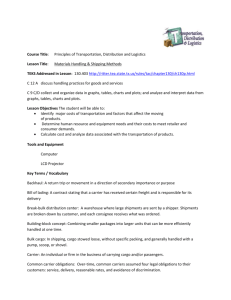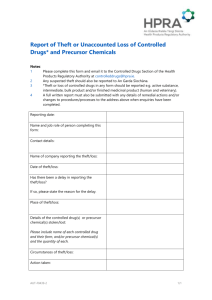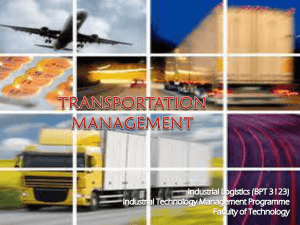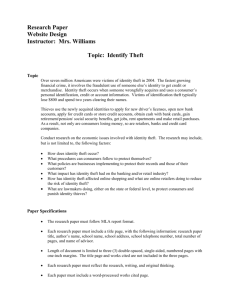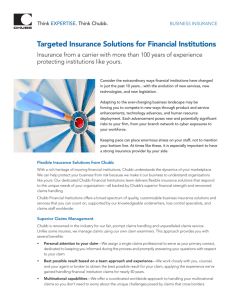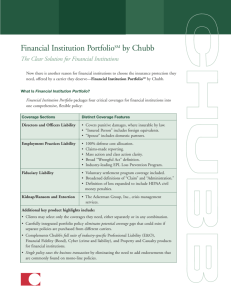Mitigating Transit Theft - Chubb Group of Insurance Companies
advertisement
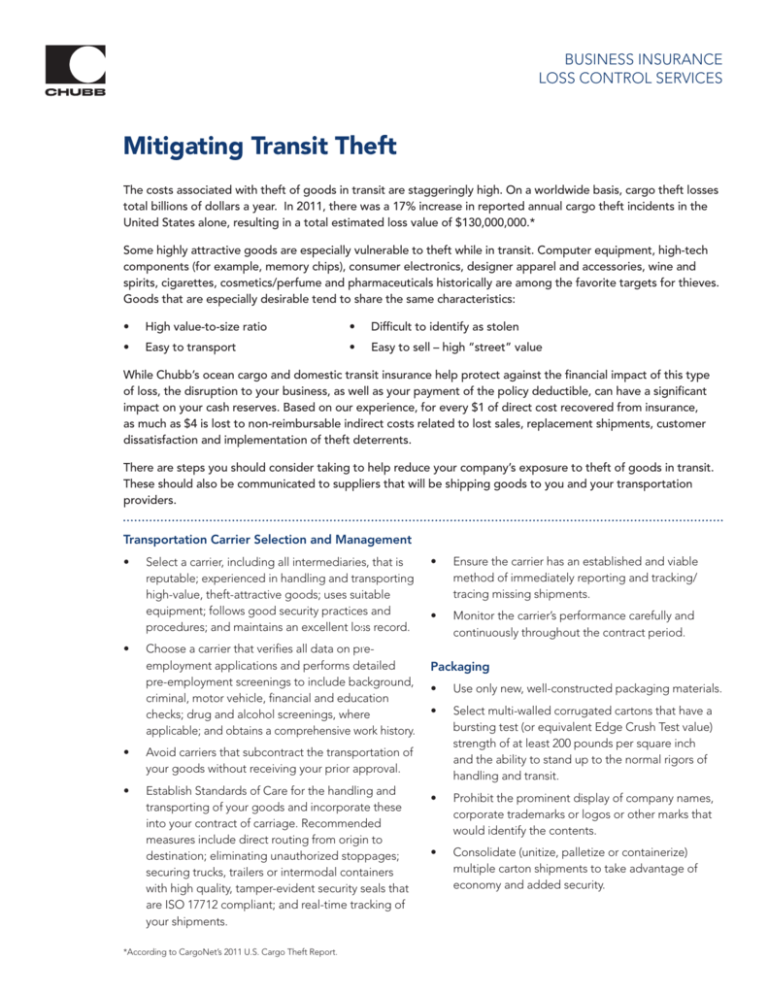
BUSINESS INSURANCE LOSS CONTROL SERVICES Mitigating Transit Theft The costs associated with theft of goods in transit are staggeringly high. On a worldwide basis, cargo theft losses total billions of dollars a year. In 2011, there was a 17% increase in reported annual cargo theft incidents in the United States alone, resulting in a total estimated loss value of $130,000,000.* Some highly attractive goods are especially vulnerable to theft while in transit. Computer equipment, high-tech components (for example, memory chips), consumer electronics, designer apparel and accessories, wine and spirits, cigarettes, cosmetics/perfume and pharmaceuticals historically are among the favorite targets for thieves. Goods that are especially desirable tend to share the same characteristics: • High value-to-size ratio • Difficult to identify as stolen • Easy to transport • Easy to sell – high “street” value While Chubb’s ocean cargo and domestic transit insurance help protect against the financial impact of this type of loss, the disruption to your business, as well as your payment of the policy deductible, can have a significant impact on your cash reserves. Based on our experience, for every $1 of direct cost recovered from insurance, as much as $4 is lost to non-reimbursable indirect costs related to lost sales, replacement shipments, customer dissatisfaction and implementation of theft deterrents. There are steps you should consider taking to help reduce your company’s exposure to theft of goods in transit. These should also be communicated to suppliers that will be shipping goods to you and your transportation providers. Transportation Carrier Selection and Management • • Select a carrier, including all intermediaries, that is reputable; experienced in handling and transporting high-value, theft-attractive goods; uses suitable equipment; follows good security practices and procedures; and maintains an excellent loss record. Choose a carrier that verifies all data on preemployment applications and performs detailed pre-employment screenings to include background, criminal, motor vehicle, financial and education checks; drug and alcohol screenings, where applicable; and obtains a comprehensive work history. • Avoid carriers that subcontract the transportation of your goods without receiving your prior approval. • Establish Standards of Care for the handling and transporting of your goods and incorporate these into your contract of carriage. Recommended measures include direct routing from origin to destination; eliminating unauthorized stoppages; securing trucks, trailers or intermodal containers with high quality, tamper-evident security seals that are ISO 17712 compliant; and real-time tracking of your shipments. *According to CargoNet’s 2011 U.S. Cargo Theft Report. • Ensure the carrier has an established and viable method of immediately reporting and tracking/ tracing missing shipments. • Monitor the carrier’s performance carefully and continuously throughout the contract period. Packaging • Use only new, well-constructed packaging materials. • Select multi-walled corrugated cartons that have a bursting test (or equivalent Edge Crush Test value) strength of at least 200 pounds per square inch and the ability to stand up to the normal rigors of handling and transit. • Prohibit the prominent display of company names, corporate trademarks or logos or other marks that would identify the contents. • Consolidate (unitize, palletize or containerize) multiple carton shipments to take advantage of economy and added security. • • Introduce tamper-evident features including unique carton tape, banding straps and/or security seals. While these measures will not prevent theft or pilferage of your goods, they will indicate that tampering has occurred and perhaps in what segment, and in whose custody, within the transport chain. Use opaque plastic stretch-wrap to secure and obscure cartons on pallets or skids. • Ship your goods door-to-door to minimize, if not eliminate, en route transfers or transshipments. • Require documented accountability (sign-off of count and condition) every time your shipment changes hands during transit. • If practical, prohibit consolidating your goods with that of other shippers (opt for exclusive-use cargo conveyances). • Consider using security escorts or covert/ embedded tracking technology for your high-value shipments transiting to or through known cargo theft “hot spots.” • Avoid making shipments late in the week as your goods will likely sit in a large sort center, regional hub or cargo terminal during the weekend, a time when there is less supervision and security on hand. • Limit access to sensitive shipment data (values, customer, destination and carrier) and documentation to those within your company who “need-to-know.” Transit • Make your shipment documentation as generic as permissible by law or regulation. Use general terms or coded information rather than specific identification of shipper and consignee or description of your goods. • Use time-definite transportation service (for example, “Next Day Air”) whenever it is available. • Plan your shipment departure so that it will arrive at destination during normal working hours, unless your customer has established appropriate afterhours receiving procedures. • • Book your international air shipments on a specific flight. Your goods should arrive at the airport as close as possible to the established deadline set by the carrier to receive goods to reduce the time they are at rest. Arrange for quick clearance of your shipments from Customs or other government entities. Require that your goods are placed in a secure area, one that is under constant personal or electronic surveillance, whenever they are at rest and in the care, custody and control of others. While these suggestions are intended to help mitigate losses to your goods in transit, they are not an exhaustive list of loss prevention solutions. For additional information or assistance Please contact your local agent, broker or Chubb underwriter. Chubb Group of Insurance Companies | www.chubb.com Chubb refers to the insurers of the Chubb Group of Insurance Companies. Not all insurers do business in all jurisdictions. This literature is descriptive only. It is offered as a resource to be used together with your professional insurance advisors in maintaining a loss prevention program. No liability is assumed by reason of the information this document contains. Actual coverage is subject to the language of the policies issued. Form 12-01-0038 (Rev. 6/12)

